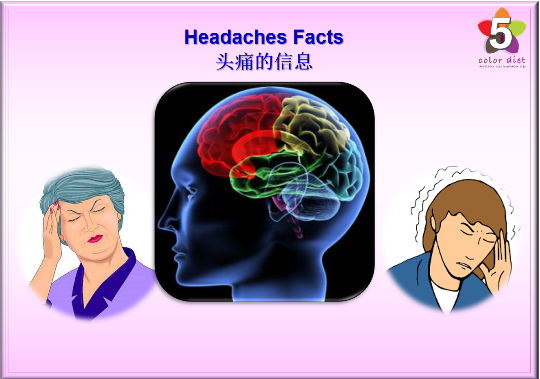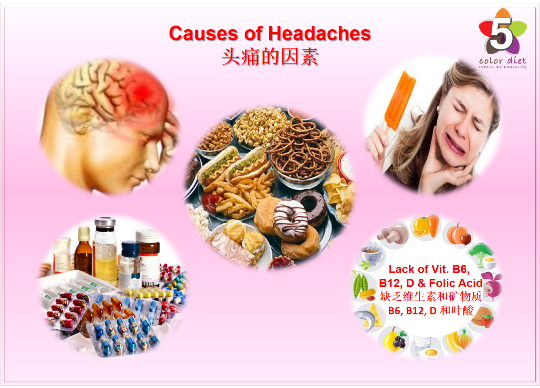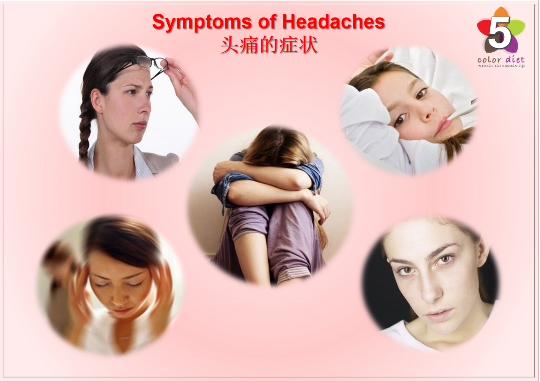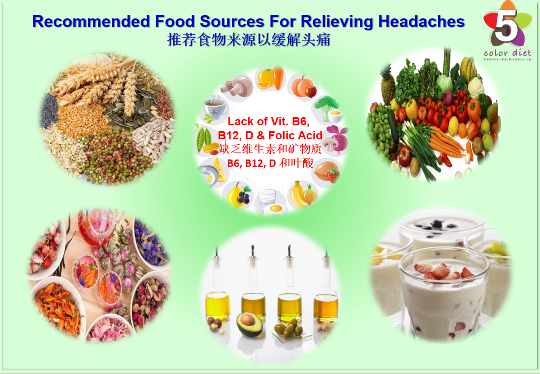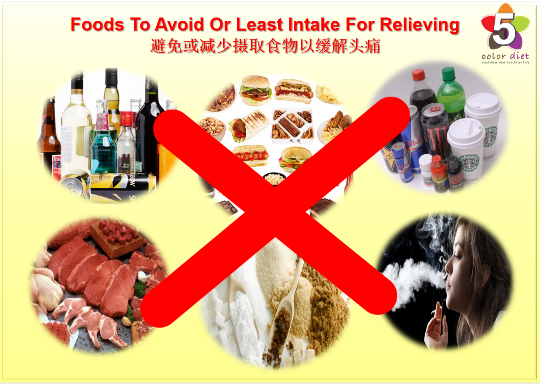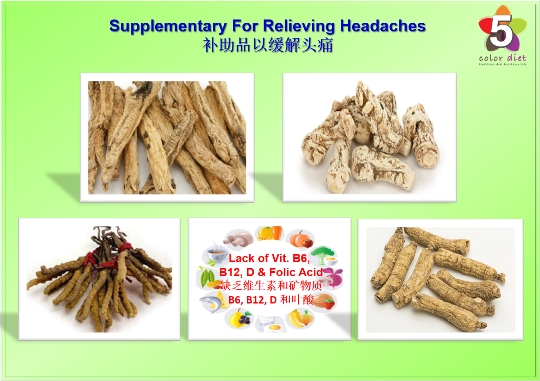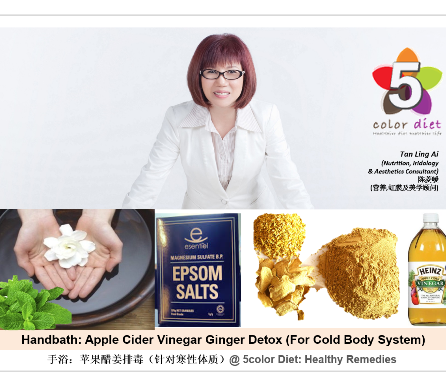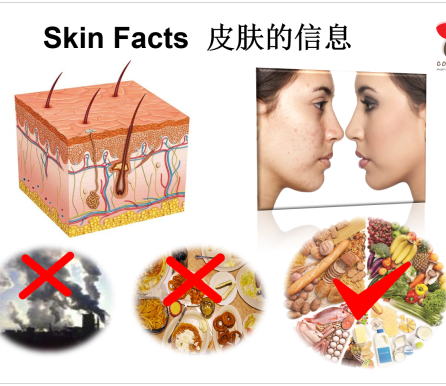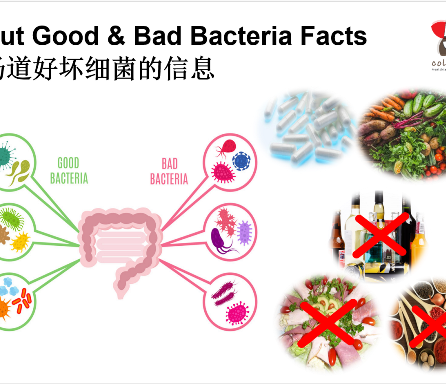
Headaches Overview
Did you know that more people complain about headaches than any other type of ailment? Headaches are common, and many people treat themselves with simple painkillers, drinking extra water, having a rest, or simply by waiting for the headache to go away. A headache is one of the most common reasons for visiting a doctor or a neurology clinic.
Almost everyone will experience headaches at some time. Most headaches are not caused by serious or sinister conditions. However, people understandably worry if headaches seem different (either particularly severe, particularly frequent or unusual in any other way). The most common worry is that the headache is a symptom of a brain tumour.
Headache is a term used to describe aching or pain that occurs in one or more areas of the head, face, mouth or neck. Headaches can be chronic, recurrent or occasional. Headache pain can be mild or severe enough to disrupt daily activities. Headaches involve the network of nerve fibers in the tissues, muscles & blood vessels located in the head and at the base of the skull.
A comprehensive headache classification guide was established by the International Headache Society and includes more than 150 different types of headaches. Based on research, a practical headache classification includes primary and secondary headaches.
(1) Primary Headache accounts for about 90 percent of all headaches. A primary headache means the headache itself is the main medical problem, although other factors, such as muscle tension or exposure to certain foods, may be identified. Other contributing factors include dehydration & medications, etc. Some types of primary headaches:
- Tension Headaches: Also called stress headaches, chronic daily headaches, or chronic non-progressive headaches, they are the most common type among adults and teens. They cause mild to moderate pain and come and go over time.
- Migraine: These headaches are often described as pounding, throbbing pain. They can last from 4 hours to 3 days and usually happen one to four times per month. Along with the pain, people have other symptoms, such as sensitivity to light, noise, or smells; nausea or vomiting; loss of appetite; and upset stomach or stomach pain. When a child has a migraine, she often looks pale, feels dizzy, and has blurry vision, fever, and an upset stomach. A small percentage of children’s migraines include digestive symptoms, like vomiting that happen about once a month. They’re sometimes called abdominal migraines.
- Mixed Headaches Syndrome: Also called transformed migraines, this condition is a mix of migraine and tension headaches. Both adults and children can have it.
- Cluster Headache: This type of headache is intense and feels like a burning or piercing pain behind the eyes, either throbbing or constant. It’s the least common but the most severe type of headache. The pain can be so bad that most people with cluster headaches cannot sit still and will often pace during an attack. It occurs daily over a period of weeks, sometimes months, and often cause severe pain. They may disappear and then recur during the same season in the following year.
(2) Secondary Headaches: Secondary headaches resulted from another medical condition, include sinus headaches, hormone headaches, chronic progressive headaches or headaches that occur as a result of a head injury, trauma, or more serious condition such as cerebrovascular disease, head trauma, infections, tumour and metabolic disorders (eg: diabetes, thyroid disease). Some types of secondary headaches:
- Sinus Headache: With these, you feel a deep and constant pain in your cheekbones, forehead, or bridge of your nose. They happen when cavities in your head, called sinuses, get inflamed. The pain usually comes along with other sinus symptoms, such as a runny nose, feeling of fullness in the ears, fever, and swelling in your face.
- Hormones Headache: Women can get headaches from changing hormone levels during their periods, pregnancy and menopause. The hormone changes from birth control pills also trigger headaches in some women.
- Chronic Progressive Headache: Also called traction or inflammatory headaches, these get worse and happen more often over time. They make up less than 5% of all headaches in adults and less than 2% of all headaches in kids. They may be the result of an illness or disorder of the brain or skull.
World Health Organisation (WHO) statistics showed that globally, it has been estimated that prevalence among adults of current headache disorder (symptomatic at least once within the last year 2015) is about 50%. Half to three quarters of adults aged 18–65 years in the world had headache in the last year 2015 and, among those individuals, 30% or more have reported migraine. Headache on 15 or more days every month affects 1.7–4% of the world’s adult population. Despite regional variations, headache disorders are a worldwide problem, affecting people of all ages, races, income levels and geographical areas.
Chinese Medicine believes that headaches occur in a variety of disease patterns. Some headaches are associated with external pernicious influences, such as wind cold, wind-heat, or wind-damp. Others occur as a symptom of internal body imbalances, such as liver fire, phlegm, blood stagnation, qi deficiency, or blood deficiency. It is especially important to have an accurate diagnosis when treating a headache, since the wrong treatment can actually make the condition worse. By integrating Western and Eastern concept, it is possible to analyze the types of headaches you may be experiencing.
-
Causes Of Headaches
● Alcohol abuse.
● Consuming certain foods like avocado, caffeine beverages or foods, chocolates, greasy foods & peanuts, etc.
● Brain Freeze: Brain freeze, also known as ice cream headache, occurs mere seconds after the ingestion of cold food. The pain can be felt on the sides of the head and generally lasts for less than a minute. Researchers don’t know what causes the pain, but according to the John Hopkins Headache Center, it is thought to be “a combination of direct stimulation of temperature-sensitive nerves plus the cold’s effects on blood vessels running along the roof of the mouth.” To reduce your risk of brain freeze, advisable to slowly ingest cold food or beverages.
● Caffeine Withdrawal: Anyone who ever stopped drinking coffee or switched to decaf knows of the dreaded caffeine withdrawal headaches. “Caffeine can have physiological effects on the vascular system and can constrict vessels or relax them at different times,” says Dr. Minen. She also believes that the dependence created by caffeine can cause a physiological reaction that triggers headaches.
● Dehydration: According to the Mayo Clinic, Dehydration is a symptom of a disease that can activate the pain-sensitive nerves of the head. Dehydration headaches occur when you lose a substantial part of the water and electrolytes that your body needs to perform normal functions. Some experts believe that a dehydration headache occurs as a result of narrowing blood vessels as the body tries to maintain enough fluid. To avoid dehydration, it is recommended that you consume moderate amounts of water during and after exercise. The Mayo Clinic recommends that men drink about 13 cups of total beverages a day and women drink 9 cups.
● Emotional stress like anxiety & depression.
● Environmental factors: Pollution, noise, lighting & weather changes are environmental factors that can trigger headaches for some people.
● Genetic: Headaches especially migraines, have a tendency to run in families. Children who have migraines usually have at least one parent who also suffers from the condition.
● Illnesses: Illnesses such as an infection, cold, or fever are common with health conditions like sinusitis (inflammation of the sinuses), a throat infection, or an ear infection. In some cases, the headaches may be the result of a blow to the head or rarely, a sign of a more serious medical problem.
● Medications.
● Nutritional Deficiencies: Vitamin B6, Vitamin B12, Vitamin D, Folic Acid deficiencies can be caused by an overall poor quality diet, underlying malabsorption issues or other medical conditions.
● Poor Posture: Headaches like eye strain, neck or back strain are caused by poor posture.
● Skipping meals.
● Changes in sleep patterns.
● Too much physical activity can also trigger a migraine in adults and children.● In Chinese Medicine, causes related to headaches are (1) Wind-Cold Headache. This is called head wind (tou feng). (2) Wind-Damp Headache (3) Wind-Heat Headache (4) Liver Yang Headache (5) Kidney Yin Deficiency Headache (6) Qi Deficiency Headache (7) Blood Deficiency Headache (8) Turbid Phlegm Headache (9) Blood Stasis Headache.
-
Symptoms Of Headaches
Identifying symptoms by body imbalances & applying the right food therapies will help to improve headaches better as below stated:
● General Symptoms Of Headaches:
● Blurry vision.
● Dizziness.
● Fever.
● Headaches (Throbbing or Persistent).
● Loss of appetite.
● Nausea.
● Pale face.
● Running nose.
● Upset stomach.
● Vomiting.● Symptoms Of Wind-Cold Headache: Distending/ pulling pain along the vertex, occipital region, and neck. Aversion to cold and wind which common wind & cold symptoms such as chills, stuffy nose or body aches which may arise due to allergies in the spring or during the change of seasons. The patient likes to cover his head (such as with a hat or scarf). No thirst. Painful joints. Tongue: Thin white coating.
● Symptoms Of Wind-Heat Headache: Distending pain or splitting headache that worsens with heat. Heat effusion & aversion to cold, red face and eyes, swollen & painful throat and cough, dry mouth and thirst. Tongue: Red & thin yellow coating.
● Symptoms Of Wind-Damp Headache: Heavy headedness (Sensation of a “towel wrapped around the head”). The headache is aggravated by rainy, damp, overcast weather. You may experience fatigue, heavy limbs, feeling of oppression in the chest, fullness in the stomach duct, sloppy stools & scanty urine, etc. Tongue: Greasy coating.
● Symptoms Of Liver Yang Headache: Severe headache usually worse in the afternoon, may be pulsing or accompanied by the appearance of blue veins on the forehead or temples. Headache is usually bilateral although it may be one sided & pain may worsen if lying down. You may experience quick temper, bitter taste in the mouth, constipation, dizziness, insomnia, irritability, red face & tinnitus, etc. May also affect the Stomach leading to nausea or vomiting. Tongue: Red with thin yellow coating.
● Symptoms Of Kidney Yin Deficiency Headache: Headache characterised by empty pain (kong tong). You may experience dizziness, fatigue, insomnia, tinnitus & vaginal discharge, etc. May have weak, aching & painful lumbus. Tongue: Red color with scant coating.
● Symptoms Of Qi Deficiency Headache: Headache that is consistent and dull, may involve the whole head or the frontal area and will worsen with overwork & other mental or physical stressors. You may experience bloatedness after meals, fatigue, faint voice, lack of strength in the limbs, poor appetite, short of breath & sloppy stools, etc. Tongue: Thin white coating.
● Symptoms Of Blood Deficiency Headache: Headache characterised by dull pain in the head. You may experience dizziness, dry eyes, flowery vision, heart palpitations, insomnia & pale lips, etc. Tongue: Pale color.
● Symptoms Of Turbid Phlegm Headache: Headache with strong sensation of heaviness & pain is worse in damp weather. You may experience abdominal distention, dizziness, indigestion, nausea, oppression & fullness in the chest, poor appetite and vomiting of watery mucus, etc. Tongue: Greasy white coating.
● Symptoms Of Blood Stasis Headache: Usually the result of a trauma, headache that is fixed in location with very strong or drilling-type pain & may be worse at night. Tongue: Purple possible with purple or dark red spots.
Differentiation of the location of headache pain
Locations of Headache Pain Body Imbalances All over the head Yin deficiency of the liver & kidney.
Deficiency of blood & Qi.Lower back of the head, usually involved the neck Hyperactive yang. Head crown Coldness. Temples, two sides of the head Liver fire. Front head involving the eyebrow region Stomach Meridian. Back of the head involving the neck Bladder Meridian. Sides of the head, involving the ears Gallbladder Meridian. -
Recommended Food Sources For Relieving Headaches
Taking food sources by body imbalances help to relieve headaches better as below stated:
● Food Sources For Relieving Headaches Related To Nutritional Deficiencies
● Vitamin B6 Food Sources: Animal livers & kidneys, banana, cabbage, cereals, dark green vegetables, eggs, milk, nuts, potatoes, wheat bran, wheat germ, whole grains, etc.
● Vitamin B12 Food Sources: Animal livers & kidneys, beef, brewer’s yeast, dairy foods (cheese, eggs, milk & yogurt), fish (herring, mackerel, salmon, trout & tuna), fish eggs, fish fin, lamb, meat, miso paste, seafood, sea algae, seaweed, shellfish, soybean & tempeh, etc.
● Vitamin D Food Sources: Animal liver, dairy products (butter, cheese, egg, milk & yogurt), fish egg yolks, fish liver oil, deep-water fish (cod, herring, mackerel, salmon & tuna), etc.
● Folic Acid Food Sources: Avocado, asparagus, banana, beans, beetroots, broccoli, brussels sprouts, carrot, cauliflower, celery, chili, citrus fruits, corn, dark leafy green vegetables, flaxseeds, lady finger, nuts, papaya, peppermint, pumpkin, raspberries, seeds, spinach, strawberries, tomatoes & yeast extract, etc.● Food Sources For Relieving Headaches Related To Wind-Cold
● Beans, Nuts & Seeds: Black beans, chestnuts, Chinese almonds, chick peas, lotus seeds, walnuts, miso paste & tempeh, etc.
● Fruits: Berries, black dates, honey dates, red dates and especially red/ black/ purple/ blue & green fruits, etc.
● Grains: Barley, Chinese barley, glutinous rice, oats & white rice, etc.
● Herbs & Spices: Black pepper, cardamom, chives, cloves, cinnamon, coriander, dong quai, garlic, ginger, green spring onions, fennel, leeks, magnolia flowers, perillia leaf, rosemary, star anise & turmeric, etc.
● Meat, Poultry & Seafood: Beef, chicken, lamb, prawns & fish (Eg: Anchovy, mackerel, salmon & tuna), etc.
● Vegetables: Kudzu root, lily bulbs, parsnips, radish and especially red/ black/ purple/ blue & green vegetables, etc.
● Others: Baked or roasted foods, maltose, rice syrup, soups & Teas (Eg: Chinese barley, cinnamon, ginger, rosemary & turmeric), etc.● Food Sources For Relieving Headaches Related To Wind-Heat
● Beans, Nuts & Seeds: Beancurd, Chinese almonds, green beans, lotus seeds, red beans, soybeans, miso paste & tempeh, etc.
● Fruits: Chinese pears, cranberries, goji berries, lemons, olives, persimmons, watermelons and especially green/ orange/ yellow/ white/ tan & brown fruits, etc.
● Grains: barley, Chinese barley, millet, white rice, rye & whole wheat, etc.
● Herbs & Spices: Dong Quai, green tea, lotus leaf, mulberry leaves, peppermint, tangerine peel, etc.
● Meat, Poultry & Seafood: Chicken & fish.
● Vegetables: Alfalfa sprouts, amaranth leaves, arugula, asparagus, bamboo shoots, broccoli, cabbage, cauliflower, Chinese cabbage, carrots, celery, Chinese spinach, eggplants, kelp, kudzu root, lettuce, lily bulbs, lotus root, peas, mushrooms, purslane, radish, spinach, Swiss chard, tomatoes, watercress, white fungus and especially green/ orange/ yellow/ white/ tan & brown vegetables, etc.
● Others: Teas (Eg: Chinese barley, chrysanthemum & leaves, green tea, honeysuckle flowers, mulberry leaves, peppermint & tangerine peel), etc.● Food Sources For Relieving Headaches Related To Wind-Damp
● Beans, Nuts & Seeds: Black beans, Chinese almonds, flaxseeds, green beans, kidney beans & lotus seeds, etc.
● Fruits: Berries, cherries, papaya and especially green/ orange & yellow fruits, etc.
● Grains: Barley, Chinese barley, white rice & rye, etc.
● Herbs & Spices: Basil, cilantro, ginger, oregano, rosemary & turmeric, etc
● Meat, Poultry & Seafood: Eel, quail eggs & sardines, etc.
● Vegetables: Alfalfa sprouts, lily bulbs, mushrooms, mustard greens, radish and especially green/ orange & yellow vegetables, etc.
● Others: Healthy oils (Eg: Canola oil, coconut oil, flaxseed oil, olive oil & sunflower oil) and Teas (Eg: Basil, Chinese barley, ginger, rosemary & turmeric), etc.● Food Sources For Relieving Headaches Related To Liver Yang
● Beans, Nuts & Seeds: Black sesame seeds, black beans, green beans, kidney beans, lentils, red beans, soybeans, soymilk, miso paste, tempeh & walnuts, etc.
● Fruits: Berries, coconut, dates, guava, peach, pears, stewed fruits and especially green/ orange/ yellow/ white/ tan & brown fruits, etc.
● Grains: Barley, Chinese barley, millet, oats, white rice & whole wheat, etc.
● Meat & Seafood: Chicken & fish.
● Vegetables: Black fungus, capsicum, carrots, lily bulbs, kale, kelp, mushrooms, mustard leaf, onion, seaweeds, string beans, white fungus, winter squash and especially green/ orange/ yellow/ white/ tan & brown vegetables, etc.
● Others: Blackstrap molasses, eggs, milk, vinegar and Teas (Eg: Chinese barley, chrysanthemum, chrysanthemum leaves, dates, peppermint & rosemary), etc.● Food Sources For Relieving Headaches Related To Kidney Yin Deficiency
● Beans, Nuts & Seeds: Beancurd, chestnuts, green beans, gingko nuts, lotus seeds, soybeans, miso paste & tempeh, etc.
● Fruits: Apples (green), apple cider vinegar, banana, berries, coconut, cranberries, grapes (green), lemon juice, mangoes, plum and especially green/ orange/ yellow/ white/ tan & brown fruits, etc.
● Grains: Barley, Chinese barley, cereals, oats, millet, white rice & whole wheat, etc.
● Herbs & Spices: American ginseng, Cordyceps, Dang Shen, Mulberry leaves & wheatgrass, etc.
● Meat, Poultry & Seafood: Eggs, chicken, fish & seafood, etc.
● Vegetables: Beets, black fungus, button mushrooms, carrot, kelp, legumes, lily bulbs, lotus root mushrooms, peas, potatoes, pumpkin, radish, seaweeds, string beans, sweet potatoes, wax gourd, zucchini and especially green/ orange/ yellow/ white/ tan & brown vegetables, etc.
● Others: Acidophilus, yogurt & Healthy oils (Eg: Canola oil, coconut oil, flaxseed oil, olive oil & sunflower oil) and Teas (Eg: American Ginseng, apple cider vinegar, berries, Chinese barley, Cordyceps, lemon juice, mulberry leaves, peppermint & wheatgrass), etc.● Food Sources For Relieving Headaches Related To Qi Deficiency
● Bean, Nuts & Seeds: Black beans, chick peas, chestnuts, fava beans, kidney beans, lotus seeds & walnuts, etc.
● Fruits: dates, cherries, figs, stewed fruits, sugarcane and especially green/ orange & yellow fruits, etc.
● Grains: Cooked whole grains (Eg: amaranth, buckwheat, cereals, oats, brown rice, millet & quinoa), hulled wheat, roasted barley.
● Herbs & Spices: Black pepper, cinnamon, garlic, ginger, fennel, nutmeg, onions, etc.
● Meat & Seafood: Fish (Eg: Anchovy, catfish, eel, mackerel, perch & tuna, etc). In moderation for beef, chicken, duck & mutton, etc.
● Vegetables: Carrots, corn, green peas, leeks, mushrooms, parsnips, pumpkin, sweet potatoes, turnips, yam and especially green/ orange & yellow vegetables, etc.
● Others: Blackstrap molasses, maltose, rice syrup and Teas (Eg: cinnamon, ginger, fennel & nutmeg, etc).● Food Sources For Relieving Headaches Related To Blood Deficiency
● Beans: Almonds, black sesame seeds, black soybeans, cashew nuts, chick peas, Chinese almonds, kidney beans, red beans, sunflower seeds, miso paste & tempeh, etc.
● Fruits: apple, apricot, avocado, berries, cherries, coconut, dates, figs, goji berries, grapes, longan, lychee, mulberries, stewed fruits and especially dark green/ orange/ yellow red/ black/ purple & blue fruits, etc.
● Grains: Amaranth, barley, brown rice, buckwheat, Chinese barley, corn, glutinous rice, millet, oats, quinoa & wheat bran.
● Herbs & Spices: Dang Shen, Dong Quai, garlic, Ginseng, ginger, Korean ginseng, onions, parsley & wheatgrass, etc.
● Meat & Seafood: Animal livers & kidneys, chicken, mussels, octopus, oysters, red meat, sardine & tuna, etc.
● Vegetables: Alfalfa sprouts, artichoke, beetroot, button mushrooms, cabbage, celery, corn, dandelion leaf, green peas, kale, kelp, leeks, parsnips, pumpkin, shiitake mushrooms, spinach, sweet potatoes, turnips, watercress, wheatgrass, taro root, yams and especially dark green/ orange/ yellow red/ black/ purple & blue vegetables, etc.
● Others: Blackstrap molasses, marmite and Teas (Eg: Dang Shen, Dong Quai, Ginger & Rosebuds), etc.● Food Sources For Relieving Headaches Related To Turbid Phlegm
● Beans, Nuts & Seeds: Black beans, chick peas, Chinese almonds, fava beans, kidney beans, lotus seeds & red beans, etc.
● Fruits: Black dates, cherries, figs, honey dates, grapefruits, kumquats, persimmons, red dates, stewed fruits, sugar cane and especially green/ orange & yellow fruits, etc.
● Grains: Barley, buckwheat, Chinese barley, millet, white rice & oats, etc.
● Herbs & Spices: Basil, black pepper, capsicum, cardamom, cloves, fennel, garlic, ginger, horseradish, mustard, onions & thyme, etc.
● Meat, Poultry & Seafood: Black chicken, chicken, fish & lean meats, etc.
● Vegetables: Asparagus, carrots, celery, corn, cucumber, leeks, lily bulbs, mushrooms, mustard greens, onions, parsnips, peas and especially green/ orange & yellow vegetables, etc.
● Others: Maltose, rice syrup, sourdough breads & Teas (Eg: Dates, buckwheat, Chinese barley, chrysanthemum & leaves, fennel, ginger, kumquats & persimmons), etc.● Food Sources For Relieving Headaches Related To Blood Stasis
● Beans, Nuts & Seeds: Almonds, black beans, chestnuts, chia seeds, Chinese almonds, flaxseeds, gingko nuts, kidney beans, pine nuts, pumpkin seeds, red beans, walnuts, soybeans, miso paste & tempeh, etc.
● Fruits: Apricot, banana, citrus fruits, hawthorn fruit, lemon, mango, papaya, peach, plum, raisins, sour jujube, sugar cane and especially green/ orange & yellow fruits, etc.
● Grains: Amaranth, cereals, oats, quinoa & white rice.
● Herbs & Spices: Alfalfa, basil, burdock, chives, dang shen, garlic, ginger, licorice, lotus leaf, onions, nutmeg, parsley, rosemary, sage, shallots, turmeric & white pepper, etc.
● Meat & Seafood: Abalone, clams, crab, fish, jellyfish, lean meat & sea cucumber, etc.
● Vegetables: Asparagus, black fungus, broccoli, Brussels sprouts, carrot, celery, Chinese radish, eggplants, kelp, leeks, mushrooms, onion, pumpkin, seaweed, spinach, taro root, yams and especially green/ orange & yellow vegetables, etc.
● Others: Brown sugar, healthy oils (eg: canola oil, olive oil, safflower oil), vinegar and Teas(Eg: Burdock, Dang Shen, Ginger, Lotus leaf & Rosebuds), etc.
* Recommendations: Try our natural tea remedies for Relieving headaches (1) Ginger Red Dates Peppermint Tea (For Cold Body System) (2) Mulberry Leaves Lavender Chrysanthemum Peppermint Leaves Tea (For Heaty Body System).
-
Foods To Avoid Or Least Intake For Relieving Headaches
Avoiding or least intake of foods by body imbalances help to relieve headaches better as below stated:
● Foods To Avoid Or Least Intake For Relieving Headaches Related To Wind-Damp
● Alcohol, beancurd, caffeine beverages, carbonated beverages, chocolates, citrus fruits, cold or raw foods (Eg: iced drinks, salads or white/ tan & brown fruits & vegetables) & dairy products (Eg: butter, cheese, eggs, milk except yogurt), eggplants, fried or greasy foods, persimmons, processed foods & refined sugars (Eg: biscuits, cakes & pastries), etc. Excessive of Vitamin C (Not more than 3,000 mg).
● Avoid smoking.● Foods To Avoid Or Least Intake For Relieving Headaches Related To Liver Yang
● Alcohol, asparagus, caffeine beverages, carbonated beverages, citrus fruits, dairy products (Eg: butter, cheese, eggs & milk except yogurt), eggplants, melons, pickles, pungent herbs (Eg: basil, capsicum, cinnamon, cloves, garlic, ginger, horseradish, leeks, onions, shallots), raw fruits, red meat, shrimps, spicy foods, vinegar & wheat, etc.
● Avoid smoking.● Foods To Avoid Or Least Intake For Relieving Headaches Related To Kidney Yin Deficiency
● Alcohol, caffeine beverages, carbonated beverages, citrus fruits, pickles, pungent herbs (Eg: basil, capsicum, cinnamon, cloves, garlic, ginger, horseradish, leeks, onions, shallots), processed foods, red meat, refined sugars (Eg: biscuits, cakes & pastries), salt, shrimps, sour foods, spicy foods & vinegar, etc.
● Avoid smoking.● Foods To Avoid Or Least Intake For Relieving Headaches Related To Qi Deficiency
● Alcohol, caffeine beverages, carbonated beverages, citrus fruits, cold or raw foods (Eg: iced drinks, salads or white/ tan & brown fruits & vegetables), dairy products except yogurt, fried or greasy foods, processed foods, seaweed, spinach, sprouts, soybean products, tomatoes, wheat products & refined sugars (Eg: biscuits, cakes & pastries), etc.
● Avoid smoking & stress.● Foods To Avoid Or Least Intake For Relieving Headaches Related To Blood Deficiency
● Alcohol, caffeine beverages, carbonated beverages, chocolates, cold or raw foods (Eg: iced drinks, salads or white/ tan & brown fruits & vegetables) & dairy products (Eg: butter, cheese, eggs & milk except yogurt), fried or greasy foods, processed foods & refined sugars (Eg: biscuits, cakes & pastries), etc. Excessive of Vitamin C (Not more than 3,000 mg).
● Avoid smoking.● Foods To Avoid Or Least Intake For Relieving Headaches Related To Turbid Phlegm
● Alcohol, avocados, beancurd, caffeine beverages, carbonated beverages, chocolates, citrus fruits, cold or raw foods (Eg: iced drinks, salads or white/ tan & brown fruits & vegetables) & dairy products (Eg: butter, cheese, eggs, milk except yogurt), fried or greasy foods, processed foods, refined sugars (Eg: biscuits, cakes & pastries), red meat, seaweeds, soybeans, soymilk, sprouts, wheat products & hydrogenated oils, etc. Excessive of Vitamin C (Not more than 3,000 mg).
● Avoid smoking.● Foods To Avoid Or Least Intake For Relieving Headaches Related To Blood Stasis
● Alcohol, all nuts & seeds except those stated in Recommended food sources, caffeine beverages, carbonated beverages, chocolate, cold or raw foods (Eg: iced drinks, salads or white/ tan & brown fruits & vegetables), dairy products (Eg: butter, cheese, eggs & milk except yogurt), fried or greasy foods, grains (Eg: brown rice & millet), processed foods, refined sugars (Eg: biscuits, cakes & pastries), red meat, salt, spicy foods & tomatoes, etc. Excessive of Vitamin C (Not more than 3,000 mg).
● Avoid smoking. -
Supplementary For Relieving Headaches
● Herbs: American Ginseng, Betony, Butterbur, Cordyceps, Dan Sheng, Dong Quai, Evodia, Feverfew, Ginger, Hops, Mullein, Peppermint, Valerian, Willow Bark & Wintergreen, etc.
● Amino Acids, Vitamins & Minerals: Vitamin A, Vitamin B Complex, Vitamin C with Bioflavonoids, Vitamin D, Vitamin E, Alpha Lipoic Acid, Calcium, Choline, Chromium, Co-Enzyme Q10, Folic Acid, L-Cysteine, Essential Fatty Acids, Lecithin, Magnesium, Methionine, Omega-3 Fatty Acids, Selenium, Vanadium & Probiotics with Prebiotics, etc. - Other Alternative Therapies For Relieving Headaches
-
Self-Care To Reduce The Risk Of Headaches
There are a number of steps that can be taken to adjust daily routines so as to reduce the risk of headaches and to ease the pain of headaches that may arise:
● Apply a heat pack or ice pack to your head or neck (avoid extreme temperatures).
● Avoid stressors where possible and develop healthy coping strategies for unavoidable stress.
● Eat regular meals, taking care to maintain stable blood sugar.
● Exercise regularly.
● Get enough rest and regular sleep.
● Have a hot shower (although there is a rare condition where hot water exposure can trigger headaches).Chinese Medicine Headache Types Health Advice Wind-Cold Strengthen your immunity to reduce risk of illnesses; wear a hat during chilly & windy weathers. Wind-Heat Avoid exposure to strong sunlight. Liver-Yang Maintain a calm state of mind & control anger; practise regular sleeping habits; avoid staying in strong sunlight or high temperatures; prevent the body from overheating & avoid alcohol. Phlegm & Dampness Keep the living place ventilated & dry, and avoid staying in humid environments. For individuals who have weakened spleen & stomach, they should maintain a simple & light diet. Qi, Blood or Kidney Deficiency Do not overstrain the body or become mentally exhausted; eat warming & nourishing foods regularly. Blood stasis Prevent head injuries; maintain a calm state of mind & control anger; avoid alcohol.












